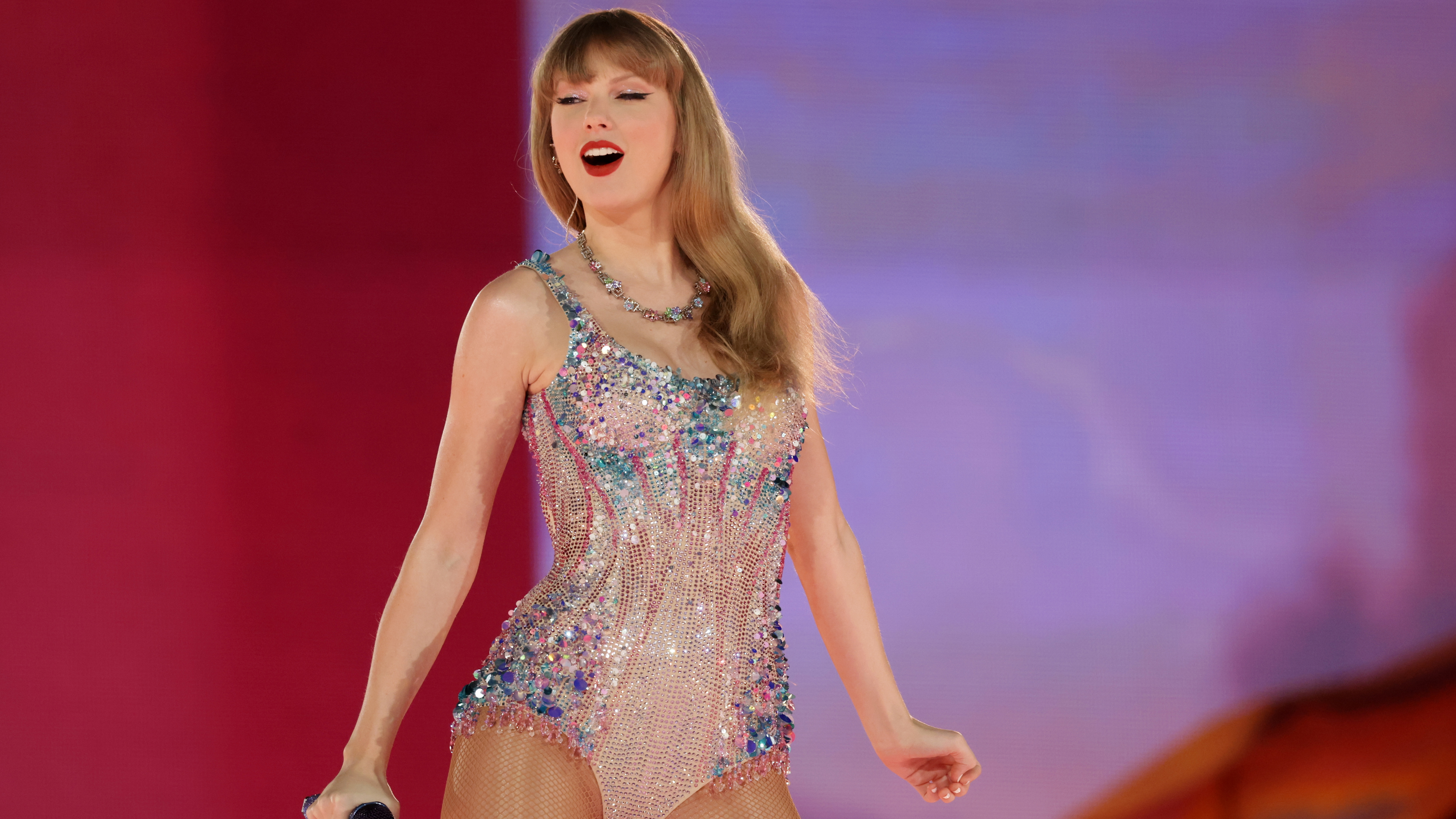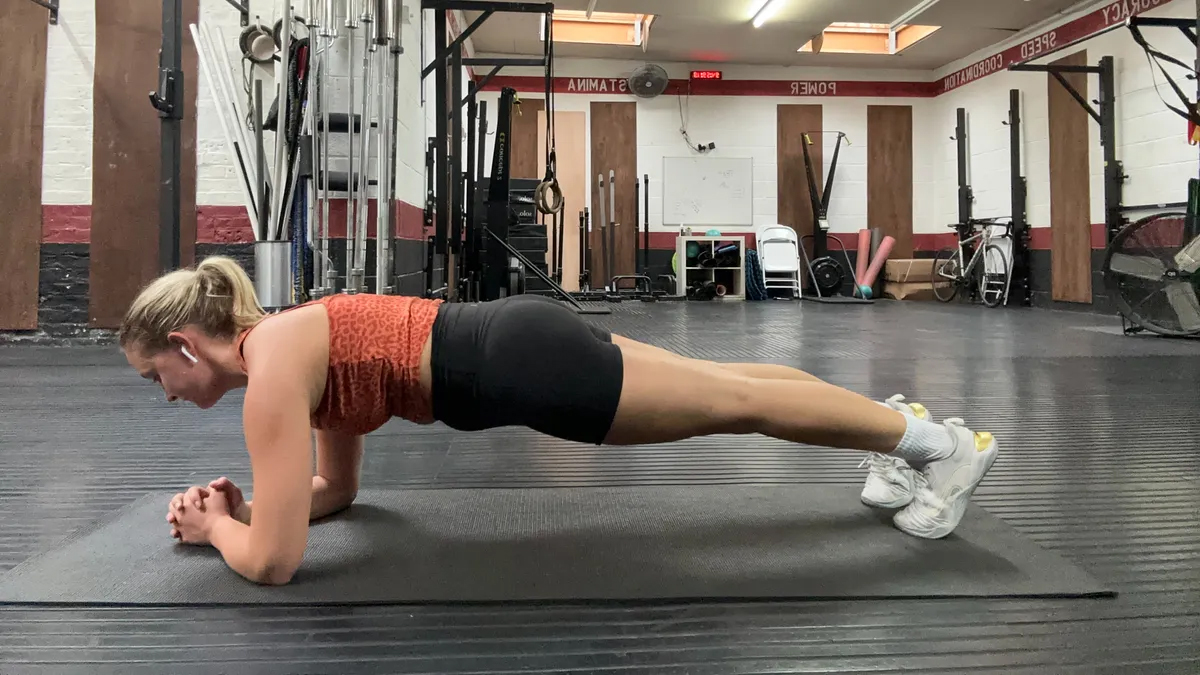
I have long admired Taylor Swift for her songwriting ability. But watching clips from The Eras Tour, I realized that she is not only a talented artist, but incredibly fit too.
Singing and performing on stage for no less than three and a half hours for consecutive nights, months on end, requires serious stamina. Swift's trainer, Kirk Myers, recently revealed in an interview with Vogue that her training schedule is intense. She sometimes works out for six days a week, often for two hours at a time.
"Some people would probably throw up or have to lay down on the floor if they trained like her," he said in the interview.
I'm certainly not looking for a workout that leaves me feeling queasy, but there was one surprising tip I took from Swift's trainer: his advice about breathing and core strength.
“One thing that’s important to focus on when you’re working on your core strength is actually breathing,” Myers says. “I know it’s outside the box, but fully breathing through workouts helps strengthen your core.”
I'm used to thinking about breathing during yoga routines, but I'd never considered how important it could be during conventional strength workouts. I asked Helen O'Leary, physiotherapist and founder of Complete Pilates, to explain.
"Breathing while exercising your core ensures you get appropriate trunk stability," says O'Leary, "Steady breathing means that your pelvic floor, diaphragm, glottis [part of your larynx/ voice box], abdominals, and back muscles will expand and then naturally recoil, giving you the support you need to stabilize your spine and work your core through its full range."
I asked O'Leary for advice on breathing through three common core exercises and tried her tips. Here's how I to on.
How to breathe properly during sit-ups
I tend to hold onto my breath during taxing exercises like sit-ups, but O'Leary says that exercising control will help you to get more out of the movement. She says most people will find that exhaling when you come up and inhaling when you go down will make the move easier, but you can use your breath to help you control any part of the movement you find difficult.
"If you are struggling to control the down phase and find yourself flopping, an exhale will help you slow that down," she says. "This is because it gives you more stability and strength."
I tried ten sit-ups using this method, taking a breath in as I sat up and exhaling as I moved back down. At first, it was difficult to inhale as I sat up as this was the most difficult part of the movement, so my instinct was to breathe out or hold my breath.
But, as I got into a rhythm, exhaling and inhaling with the movement helped me control my pace and I felt that I got more out of the exercise than usual. I felt my abdominal muscles switch on and I had to think about stabilizing my core muscles, which increased that burning feeling.
How to breathe properly during planks
The plank is an isometric movement, which means you hold it for some time rather than moving in and out of it. Lots of people, myself included, find themselves holding their breath as they hold the plank, but this isn't a good idea.

"Exhaling will again give you more trunk stability and you may find it helps to hold you in position, while inhaling will challenge this," O'Leary says.
I tried a one-minute plank, thinking about breathing as deeply as possible, and extending my exhale for added stability. This got harder the longer I held the position, but focusing on my breathing helped me feel like I could stay in the plank longer than usual.
How to breathe properly dead bugs
The dead bug is a great dynamic exercise for building core strength and stability. Ensuring your breath and movements are slow and controlled can make the move more effective.
"For a dead bug, you may find it easier to lower the leg on an exhale," O'Leary recommends. "Again, this will give you more stability and make you feel stronger."
If you find dead bugs difficult, O'Leary suggests that you can exhale as you lower the leg down, quickly inhale and then exhale again to move the leg up.
If you want to make the dead bug more challenging, O'Leary recommends reversing that breath. So you inhale as you lower, quickly exhale, and inhale again as you lift, which will challenge the muscles around your trunk and your breath control.
I often feel that my core isn't properly engaged during dead bugs, so I decided to try the more difficult version. It was challenging to inhale during the main parts of the movement, but I think it helped me brace my core and activate that mind-muscle connection more.
Does breathing during core work make a difference?
Thinking about my breathing during these core movements enhanced the experience. It helped me control the exercises and focus on stability, which maximized core engagement.
It also helped me move at a slower pace, rather than rushing through, which increased the time my muscles were under tension.
I'll be taking these tips forward into future core workouts, especially if they help me gain even a fraction of Swift's core strength.







